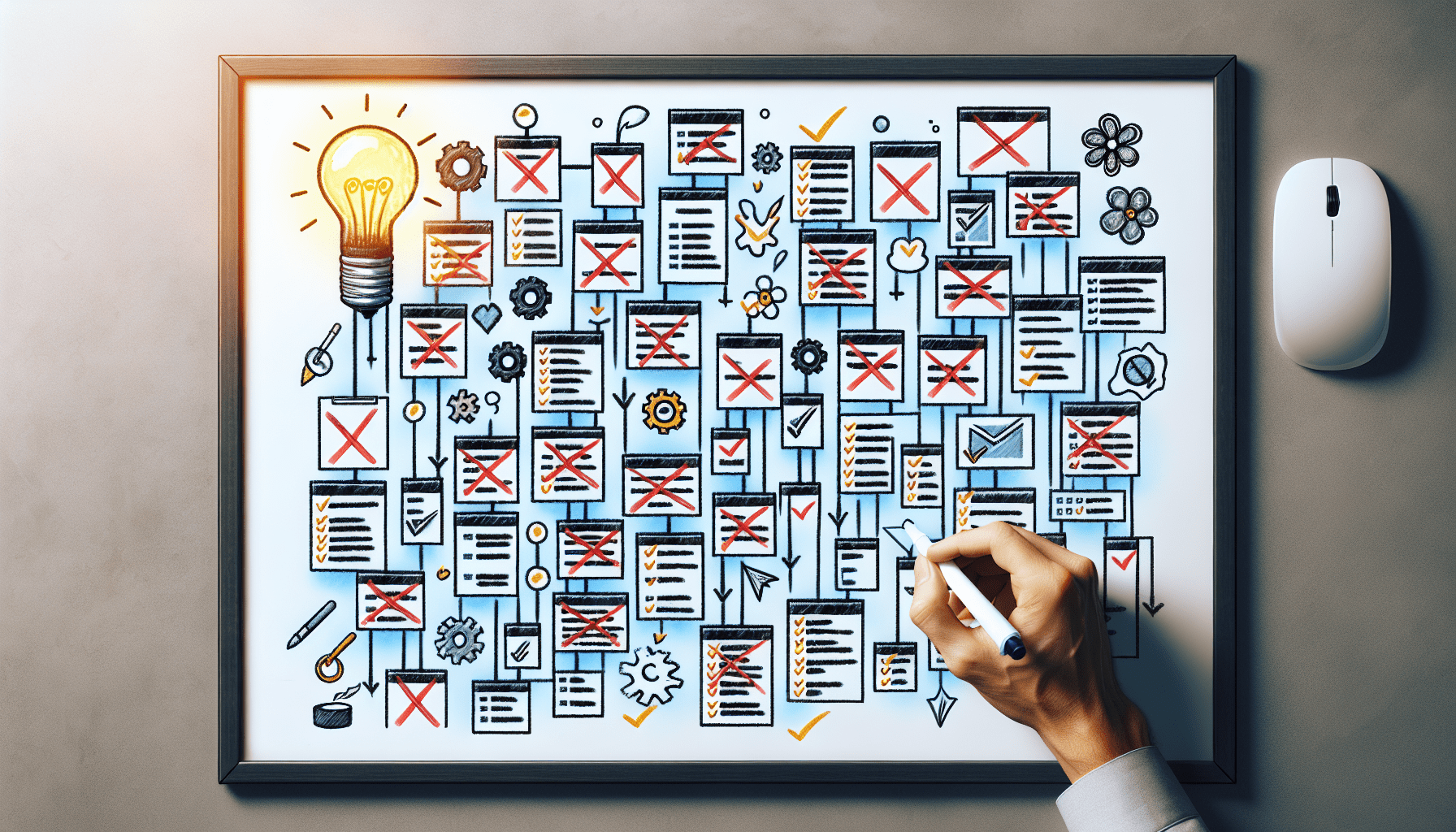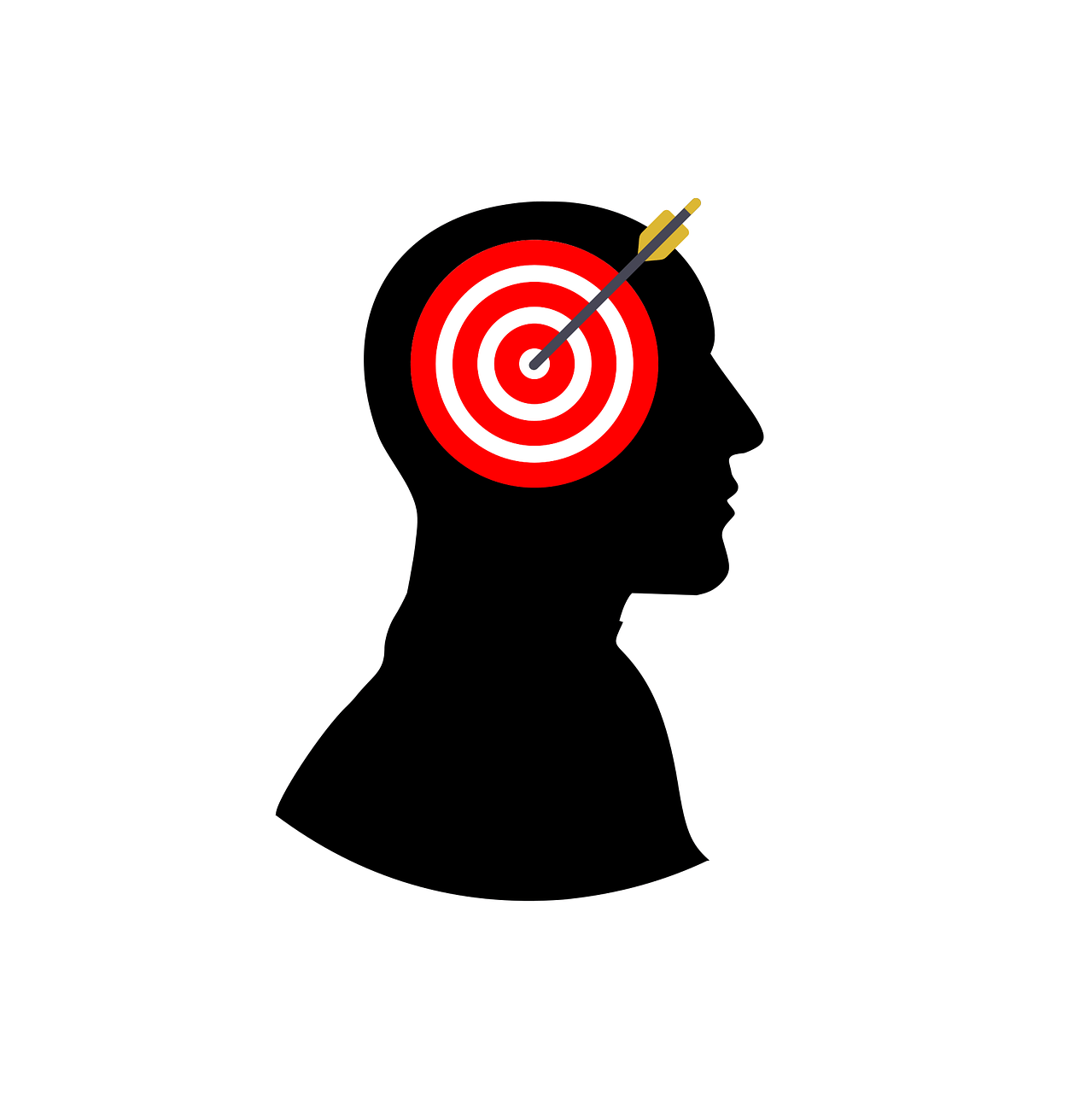
The Power Of No: Tools To Help You Decline And Focus On Priorities

Are you feeling overwhelmed by the never-ending stream of demands and requests that come your way? It’s time to tap into the power of saying “no.” In this article, we will explore how the simple act of declining can actually help you focus on your priorities and enhance your productivity. We will take a look at some powerful tools, including productivity apps, time management techniques, and effective prioritization methods, that will enable you to streamline your workflows and make your tasks more manageable. Say goodbye to overwhelm and hello to a more focused and fulfilling work life.

Time Management Tools
Calendar apps
Calendar apps are essential time management tools that help you keep track of your schedule, appointments, and deadlines. These apps allow you to easily schedule and organize your tasks, events, and reminders in one place. With features like notifications and syncing across devices, calendar apps ensure that you never miss an important meeting or deadline again. Some popular calendar apps include Google Calendar, Microsoft Outlook, and Apple Calendar.
Task management apps
Task management apps are designed to help you plan, organize, and prioritize your tasks effectively. These apps provide a centralized platform where you can create, assign, and track tasks, set due dates, and collaborate with others. Task management apps often offer features like task prioritization, progress tracking, and task dependencies to ensure that you stay focused and productive. Examples of popular task management apps include Trello, Asana, and Todoist.
Time tracking software
Time tracking software is a valuable tool for managing your time and improving productivity. These tools enable you to monitor how much time you spend on different tasks, projects, or activities. By tracking and analyzing your time usage, you can identify patterns, eliminate time-wasting activities, and allocate your time more efficiently. Time tracking software also helps in setting realistic deadlines and estimating project timelines accurately. Some popular time tracking software options include Toggl, RescueTime, and Harvest.
Prioritization Methods
Eisenhower Matrix
The Eisenhower Matrix, also known as the Urgent-Important Matrix, is a widely used prioritization method. It helps you categorize tasks based on their urgency and importance, allowing you to prioritize them accordingly. The matrix consists of four quadrants:
- Urgent and important tasks: These tasks should be your top priority and require immediate attention.
- Important but not urgent tasks: These tasks should be scheduled and given dedicated time to complete.
- Urgent but not important tasks: These tasks should be delegated or minimized as they may distract you from more important work.
- Not urgent and not important tasks: These tasks should be eliminated or postponed as they do not contribute to your goals.
ABC analysis
ABC analysis is a technique that helps you categorize and prioritize tasks based on their value or importance. It involves dividing tasks into three categories:
- A tasks: These are critical tasks that directly contribute to your goals. They require your immediate attention and should be given high priority.
- B tasks: These tasks are important but not as critical as A tasks. They can be scheduled and completed after the A tasks.
- C tasks: These tasks are less important and can be deferred or delegated to others if possible. They should be given the lowest priority.
Pomodoro Technique
The Pomodoro Technique is a time management method that uses timed intervals to improve focus and productivity. It involves breaking your work into 25-minute segments called Pomodoros, followed by short breaks. After completing four Pomodoros, take a longer break. This technique helps you maintain concentration and avoid burnout by working in focused bursts. By allocating specific time intervals for work and breaks, you can enhance productivity and manage your time effectively.

Efficiency Tools
Workflow automation software
Workflow automation software automates repetitive tasks and processes, eliminating the need for manual intervention. These tools streamline workflows, reduce human error, and save time. With workflow automation software, you can create customized workflows that automatically perform certain actions or trigger events based on pre-defined conditions. Examples of workflow automation software include Zapier, Microsoft Power Automate, and IFTTT.
Productivity extensions for web browsers
Productivity extensions for web browsers enhance your browsing experience and help you stay focused and efficient. These extensions provide features like ad-blockers, distraction blockers, note-taking tools, and task managers directly within your browser. By blocking distracting elements and providing quick access to productivity tools, these extensions ensure that you stay on track while working online. Some popular productivity extensions include RescueTime, StayFocusd, and Evernote Web Clipper.
Project management tools
Project management tools are designed to help you plan, track, and collaborate on projects effectively. These tools provide a centralized platform where you can create project plans, assign tasks, set deadlines, track progress, and communicate with team members. Project management tools often offer features like Gantt charts, task dependencies, file sharing, and team collaboration to ensure smooth project execution. Examples of popular project management tools include Asana, Monday.com, and Basecamp.
Mindfulness Apps
Meditation apps
Meditation apps are designed to help you practice mindfulness and reduce stress. These apps offer guided meditation sessions, breathing exercises, and relaxing music to help you relax, focus, and restore your mental well-being. By incorporating mindfulness into your daily routine, you can improve clarity of thought, reduce anxiety, and enhance your overall productivity. Some popular meditation apps include Headspace, Calm, and Insight Timer.
Breathing exercise apps
Breathing exercise apps provide guided breathing techniques that help you manage stress, increase focus, and improve your overall well-being. These apps offer various breathing exercises, such as box breathing, deep breathing, and diaphragmatic breathing, that can be customized to your preferences. By incorporating regular breathing exercises into your routine, you can optimize your mental and physical health, leading to increased productivity and stress reduction. Examples of breathing exercise apps include Breathing Zone, Prana Breath, and Breathe2Relax.
Gratitude journal apps
Gratitude journal apps encourage you to practice gratitude and keep a record of things you are thankful for. These apps provide a platform for you to jot down daily entries of things that bring you joy, happiness, and gratefulness. By cultivating a habit of gratitude, you can shift your focus to the positive aspects of your life, reduce stress, and improve your overall well-being. Some popular gratitude journal apps include Grateful: A Gratitude Journal, Five Minute Journal, and Happier.

Saying No Techniques
Assertive communication training
Assertive communication training helps you develop the skills to express your needs, boundaries, and priorities effectively without being aggressive or passive. Learning to say no assertively allows you to decline requests or tasks that do not align with your goals or priorities. By setting clear boundaries and communicating them assertively, you can protect your time and focus on what truly matters. Assertiveness training courses, workshops, or books can help you enhance your communication skills and become more confident in saying no.
Active listening practices
Active listening practices involve genuinely focusing on and understanding the speaker’s message, without interruptions or distractions. By actively listening and acknowledging the speaker’s perspective, you can respond thoughtfully and respectfully, even when declining requests or opportunities. Active listening builds stronger relationships, fosters mutual understanding, and allows for productive conversations. To improve your active listening skills, practice techniques like maintaining eye contact, paraphrasing, and avoiding distractions.
Setting boundaries
Setting boundaries is crucial to protect your time, energy, and mental well-being. By establishing clear boundaries, you can effectively communicate what you are comfortable with and what you are not. This allows you to say no to tasks or commitments that may overwhelm or distract you from your priorities. Setting boundaries involves understanding your limits, communicating them openly and assertively, and being consistent in enforcing them. Practice self-reflection and identify your limits and priorities to define and communicate your boundaries effectively.
Delegation Tools
Task delegation apps
Task delegation apps help you assign and manage tasks among your team or collaborators. These apps provide a centralized platform where you can create tasks, assign them to specific individuals, set deadlines, and track progress. By delegating tasks efficiently, you can distribute workload, promote collaboration, and focus on higher-priority responsibilities. Some popular task delegation apps include Asana, Trello, and Microsoft Planner.
Collaboration platforms
Collaboration platforms enable you to collaborate, communicate, and manage projects with your team or clients effectively. These platforms provide features like file sharing, real-time document editing, team chats, and task management to streamline collaboration. By using collaboration platforms, you can improve communication, enhance teamwork, and ensure everyone is on the same page. Examples of collaboration platforms include Slack, Microsoft Teams, and Google Workspace.
Virtual assistant services
Virtual assistant services offer remote professional assistance to help you delegate tasks and manage your workload. Virtual assistants can handle administrative tasks, research, scheduling, email management, and various other tasks as needed. By outsourcing tasks to virtual assistants, you can free up your time, focus on high-value activities, and increase productivity. Popular virtual assistant service providers include Upwork, TaskBullet, and Zirtual.
Learning to Prioritize
Self-reflection exercises
Self-reflection exercises involve introspection and analysis to identify your goals, values, strengths, and areas for improvement. By understanding your priorities and values, you can align your actions and tasks accordingly. Self-reflection exercises can include journaling, creating vision boards, meditating on your goals, or seeking feedback from trusted individuals. Regular self-reflection helps you gain clarity, set effective goals, and make conscious decisions about how to allocate your time and energy.
Goal-setting worksheets
Goal-setting worksheets provide a structured approach to setting and achieving your goals. These worksheets prompt you to define specific, measurable, attainable, relevant, and time-bound (SMART) goals, helping you clarify your objectives and create actionable plans. By setting clear goals and breaking them down into smaller tasks, you can prioritize your efforts and stay focused on what matters most. Many websites and apps offer goal-setting worksheets, or you can create your own tailored to your needs.
Time auditing techniques
Time auditing techniques involve analyzing and evaluating how you currently use your time. By tracking your activities and the time spent on each, you can identify time wasters and areas where you can optimize your productivity. Time auditing can be done manually by keeping a time log or by using time tracking software. Through time auditing, you gain insights into your time management habits and can make informed decisions to prioritize tasks and eliminate unnecessary activities.
The Power of Outsourcing
Freelance platforms
Freelance platforms connect businesses and individuals with freelance professionals who can provide specialized services. These platforms offer a wide range of freelancers skilled in various fields, such as writing, design, programming, and marketing. By outsourcing tasks or projects to freelancers, you can access expertise on-demand, save time, and focus on core activities. Popular freelance platforms include Upwork, Freelancer, and Fiverr.
Virtual team management tools
Virtual team management tools help you effectively manage and collaborate with remote teams. These tools offer features like task assignment, file sharing, team communication, and progress tracking to ensure seamless coordination. By utilizing virtual team management tools, you can efficiently delegate tasks, promote remote collaboration, and maintain accountability. Examples of virtual team management tools include Slack, Trello, and Asana.
Outsourcing consultants
Outsourcing consultants provide professional guidance and expertise in outsourcing strategies and practices. These consultants help businesses analyze their workflow, identify tasks suitable for outsourcing, and find the right outsourcing solutions. By working with outsourcing consultants, you can optimize your outsourcing efforts, minimize risks, and maximize the benefits of outsourcing. Outsourcing consultants can provide valuable insights and recommendations tailored to your specific business needs.
Conflict Resolution Strategies
Negotiation techniques
Negotiation techniques are methods used to resolve conflicts or disputes through communication and compromise. These techniques involve finding common ground, understanding the needs and interests of all parties, and seeking mutually beneficial solutions. By developing negotiation skills, you can effectively resolve conflicts, reach consensus, and maintain positive relationships. Negotiation workshops, courses, or books can help you enhance your negotiation skills.
Mediation services
Mediation services provide a neutral and third-party mediator who facilitates the resolution of conflicts between individuals or groups. Mediators help parties communicate, understand each other’s perspective, and work towards mutually agreeable solutions. By utilizing mediation services, conflicts can be addressed in a cooperative, non-adversarial manner, reducing tension and fostering understanding. Mediation services are often available through specialized organizations or certified mediators.
Conflict resolution courses
Conflict resolution courses offer structured training and education on resolving conflicts effectively. These courses teach techniques, strategies, and communication skills that can be used in various conflict situations. By participating in conflict resolution courses, you can develop a deeper understanding of conflict dynamics, learn effective communication techniques, and acquire the skills needed to resolve conflicts in a constructive and positive manner. Many educational institutions, training centers, and online platforms offer conflict resolution courses.
Value-based Decision Making
Values clarification exercises
Values clarification exercises help you identify and define your personal or organizational values. These exercises involve reflecting on what is most important to you and what principles guide your decision-making. By clarifying your values, you can align your decisions with what truly matters to you, ensuring congruence between your actions and your core principles. Values clarification exercises can include journaling, guided reflections, or discussions with trusted individuals.
Decision matrix
A decision matrix is a tool that helps you evaluate and compare options based on multiple criteria. It involves creating a matrix or table with criteria that are important to your decision and assigning weighted scores to each criterion. By systematically evaluating options against these criteria, you can objectively compare alternatives and make decisions aligned with your priorities. Decision matrix templates can be created using spreadsheets, or there are online tools available for this purpose.
Moral compass assessment
Moral compass assessment involves reflecting on your personal values, ethics, and beliefs to guide your decision-making. It helps you assess how your choices align with your moral compass and ethical standards. By understanding your moral principles and evaluating decisions against them, you can ensure that your choices are ethical and in line with your beliefs. Moral compass assessments can be done individually or with the guidance of ethical frameworks or principles.
In conclusion, effective time management, prioritization, mindful practices, assertive communication, delegation, and value-based decision-making are key strategies to improve productivity, focus on priorities, and achieve personal and professional goals. By utilizing the various tools, techniques, and apps mentioned in this article, you can streamline your workflows, enhance your efficiency, and create a sense of balance and fulfillment in your life. Remember, finding the right tools and methods that work for you may require some experimentation and adaptation. Start incorporating these strategies into your routine, and you’ll be on your way to success.





















